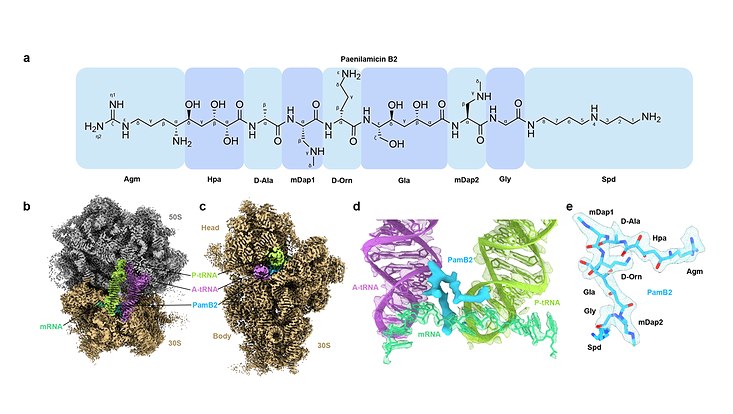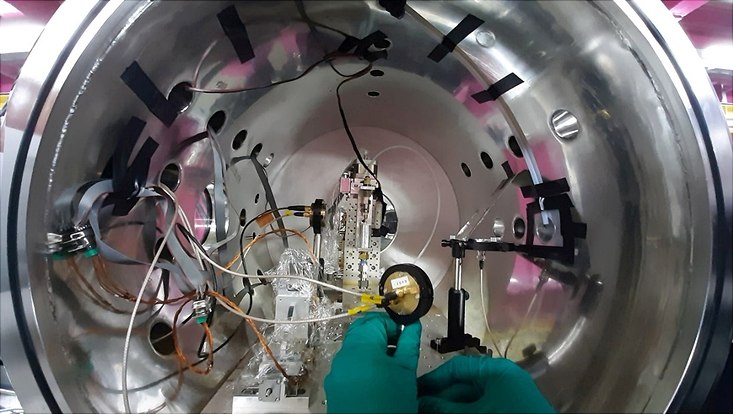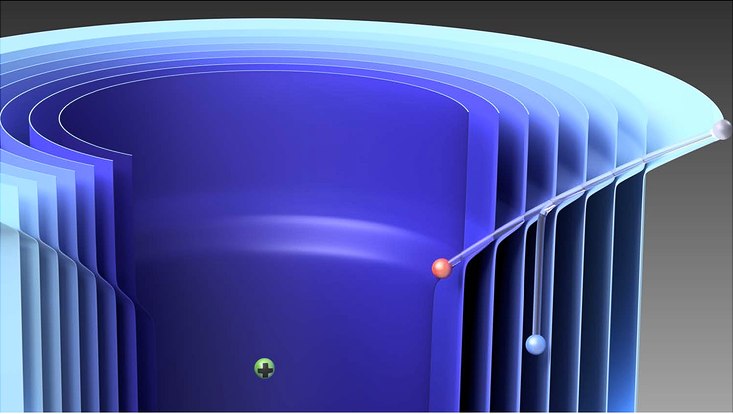and Natural Sciences
Paenilamicins represent a promising new class of antibiotics
17 October 2024, by MIN-Dekanat

Photo: UHH/Wilson
Paenilamicins are compounds that are effective against various bacterial pathogens. Researchers led by the Department of Chemistry at the University of Hamburg have now elucidated the mechanism of these compounds. The results make paenilamicins an attractive class of compounds for the development of novel antibiotics and have been published in the journal ‘Nature Chemical Biology’.
Antibiotics play an important role in the treatment of infectious diseases. However, more and more bacteria are developing resistance to various antibiotic agents. Paenilamicins, which are produced by the bacterium Paenibacillus larvae, could be a potential new class of antibiotics. Paenibacillus larvae is the causative agent of American foulbrood - a bacterial disease that affects honey bees and can lead to the death of the entire colony under certain circumstances.
Studies have already shown that paenilamicins are effective against various bacteria such as Staphylococcus aureus and have been proven to be four times more effective than the standard drug ciprofloxacin. Staphylococcus aureus colonises many people without them noticing. However, in the case of a weakened immune system, the bacterium can cause wound infections and even blood poisoning. Many variants of Staphylococcus aureus are resistant to conventional antibiotics.
Although researchers have already shown that paenilamicins inhibit protein synthesis, their exact mechanism of action has remained unclear. Experts suspect that the effect is based on the binding of paenilamicins to ribosomes. Ribosomes are large molecules that are found in the cells of plants, animals, humans and bacteria and produce essential proteins during protein biosynthesis.
An international research team led by Prof Dr Daniel Wilson from the Department of Chemistry at University of Hamburg has now generated ribosome complexes with paenilamicins (PamB2) and examined them using cryo-electron microscopy. ‘This enabled us to identify a unique binding site for PamB2. The structures not only provide a precise description of the interactions of PamB2 with the ribosome, but also explain the resistance mechanisms used by Paenibacillus larvae,’ says Prof Wilson.
‘Based on our results, we propose a model for the mechanism of action of how PamB2 binds to the ribosome and inhibits protein synthesis. Together with the good activity against S. aureus, this makes paenilamicins an attractive class of compounds for the future development of agents to combat drug-resistant bacteria,’ adds Max Berger, Doctoral Researcher in the group of Prof Daniel Wilson and co-author of the study .
Original publication
Koller, T.O., Berger, M.J., Morici, M. et al. Paenilamicins are context-specific translocation inhibitors of protein synthesis. Nat Chem Biol (2024). https://doi.org/10.1038/s41589-024-01752-9


